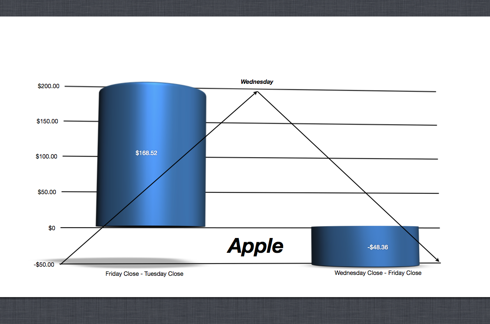Today I'm going to start a weekly series where I pick a few articles from different blogs I keep an eye on. It's always good to have different perspectives and viewpoints when trading.
The first comes from someone I mention a lot on here, Mark_Lexus. It's entitled How to Screw up a Diagonal Spread. In the coming weeks and months, you'll see me start to employ this strategy, and post about how/when to use it.
Diagonals are basically analogous to a covered call, except with much less cash invested upfront, hence a (possibly) greater return. The key is to remember that this is not a day trade. You need to have patience with it and ignore the daily price fluctuations.
As mark points out, "the purpose is to capture that monthly premium of that short
call... the day to day, week to week movement of the stock is
irrelevant. YOU HAVE 1.5 YEARS OF STOCK MOVEMENT AHEAD OF YOU."
He goes on to further point out the pitfalls of overtrading and babysitting your quote screen: "if you cant handle the ups and
downs while laughing all the way to the bank on those juicy monthly
premiums, then maybe you should stick to mutual funds or index ETF's."
View the full post here.
Next comes from Options TradingIQ (OTIQ). In his post, he explains some key points regarding iron condors and adjusting them.
Iron condors are a powerful strategy to scalp time premium and make a profit in sideways markets. But while they are high percentage, a loser can turn into a real thorn in a hurry.
It's up to you to decide how best to adjust your trades, but one often-overlooked strategy involved buying or selling the underlying stock to stay delta-neutral. Remember, the point of the trade is to make money from time decay, not a directional movement in the stock. By purchasing and selling shares to stay delta-neutral, you can offest any losses in the condor, with gains in the stock.
OTIQ: "Another option that works, is to hedge your position by
either buying the underlying OR buying some out-of-the-money options.
The easiest way to do this is with stock and using delta. Assume your
delta on the Put Spread is around 0.15. You could sell 7 shares to hedge
half of your current delta (or whatever ratio you decide is
appropriate). The risk with this is that if the underlying rises, you
end up giving up some of your profits on the Iron Condor, but that’s the
price you pay for protection I guess. The other issue is that the delta
will change over time, so you may need to buy or sell more of the
underlying to adjust your hedge which again could erode some of your
profits and also incurs transaction costs. If you chose to hedge with
options, you could look at buying some puts (calls) further out of the
money than your Condor strikes. Again, use delta as a guide here."
View the full post here.
The last article comes from Travis Lewis via SeekingAlpha Travis runs a blog called AAPL Pain in which he details his theory that the stock price of Apple (AAPL) is governed by the options market.
In this article, Travis explains his "Poor Man's Algorithm" for buying and selling AAPL shares. He has identified a pattern where AAPL tends to gain the most from Friday's close to Tuesday's close, and lose the most from Wednesday's close to Friday's close. It's definitely an interesting idea.
"Now that we have discovered a tradable pattern, let's exploit it. The
instructions are simple; you want to 'buy on close' every Friday (or
Thursday if Friday closed). You can enter various types of buy on close
orders. The goal is to buy the closing print or as close to it as
possible. The exit for this trade is a 'sell on close' order every
Tuesday. This is the first half of the algo or the long only side. A
benefit of the long only is less holding risk. It's taking on 4 days of
risk vs. 7 if you were to buy and hold all year. This means we are
removing 156 days of risk per year."
"The second half of the algo is to exploit the fall from options closing
and related reasons. The performance in 2011 was an additional $48.36
gain. The instructions are simple; you want to 'sell on close' every
Wednesday. The exit for this trade is 'buy on close' every Friday (or
Thursday if Friday closed)."
View the full post here.



Thanks for including me in your list.
ReplyDeleteThanks for putting together a best of the web series. I think its a great idea.
ReplyDeleteThanks for the comments, guys. Glad you enjoy it. Will be posting another one next Friday.
ReplyDelete